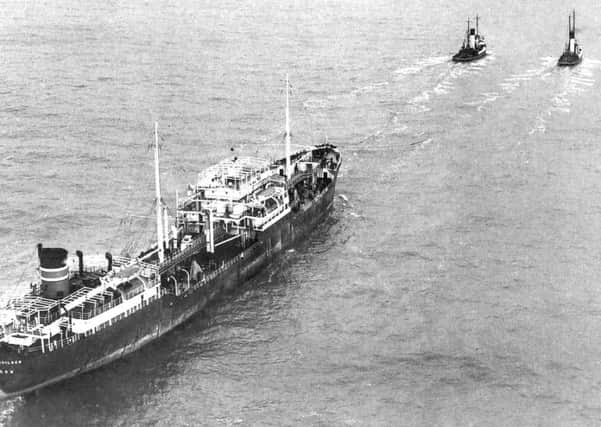ON THE WATERFRONT: Tanker's epic trip under tow


Launched as British Builder and British Craftsmen on June 14 and August 29 respectively, these ships formed part of a seven-tanker order for the Wear.
Doxford’s had already launched British Defender and British Diplomat, while Joseph L Thompson and Sons would construct British Navigator, British Rover and British Warrior.
Advertisement
Hide AdAdvertisement
Hide AdDriven by Doxford engines, all seven were adapted to burn heavy fuel oil after post-war research showed that cheaper grades of heavy oil could be used.
As the 8,699 gross tons British Builder sailed on her maiden voyage to Abadan (Iran) on March 23, 1951, no-one could have anticipated the events that would lead to her returning to the Wear after an epic 10,000-mile voyage under tow.
On August 17, 1954, while carrying crude oil from the Persian Gulf to Botany Bay, Australia, she suffered catastrophic engine failure caused by a broken crankshaft off Albany, Western Australia and drifted 71 miles.
Help arrived in the form of the British Tanker Company’s British Gratitude, which had steamed some 800 miles to the rescue.
Advertisement
Hide AdAdvertisement
Hide Ad82 hours after breaking down and drifting 71 miles, British Builder was taken in tow by British Gratitude, but hampered by heavy weather, the pair made slow progress, eventually reaching Albany on August 24.
Near the end of tow, the towline broke after British Gratitude had embarked her pilot.
Fortunately, British Builder was able to drop anchor, while British Gratitude docked at Albany for repairs before continuing to Melbourne.
While at anchor, British Builder’s cargo of crude oil was trans-shipped to British Surveyor for discharge at Botany Bay.
Advertisement
Hide AdAdvertisement
Hide AdOn September 10, British Builder left in tow of the tanker British Merit, completing the 5,000-mile voyage to Aden in 30 days.
At Aden, British Builder loaded crude oil for the Isle of Grain refinery on the Thames.
This time, towed by British Baron, she headed for the UK and after some hitches transiting the Suez Canal, the pair reached the Isle of Wight.
There, United Towing’s seagoing tugs Masterman and Merchantman completed the tow to the Thames, but not before British Builder had ran aground at Herne Bay when a tow rope snapped.
Advertisement
Hide AdAdvertisement
Hide AdAfter discharging her cargo and being held up by bad weather, British Builder arrived off Sunderland on December 9, 1954, still in charge of Masterman and Merchantman.
Brought into the Wear by four France, Fenwick Tyne and Wear tugs, she was initially docked in Greenwell’s No 2 Dry Dock for voyage repairs.
Later that month, she was towed to Doxford’s Quay where a new crankshaft was fitted.